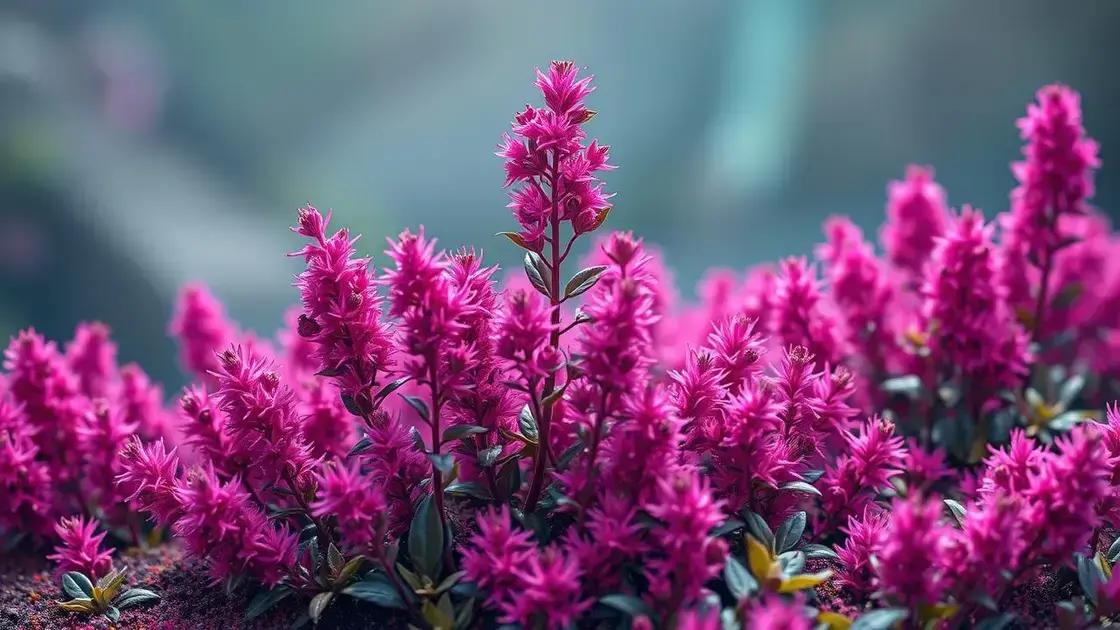How to Care for a Heather Plant: 5 Essential Tips for Vibrant Blooms
How to care for a heather plant may seem unclear at first, but unlocking the secrets to vibrant blooms is easier than you think. Explore insightful tips and tricks that connect your green thumb with the unique needs of these stunning plants. Dive into the essential care your heather deserves!
Table of Contents
ToggleWatering schedule for heather plants
How to care for a heather plant effectively begins with understanding the importance of a proper watering schedule. Heather plants thrive in well-drained, slightly acidic soil, and maintaining the right moisture levels is crucial to their health and vibrancy.
In this section, you’ll discover:
- The ideal frequency of watering
- Tips to avoid overwatering
- Signs that your heather plant needs water
Following a consistent watering schedule helps your heather flourish. Generally, heather plants require watering every 1-2 weeks during dry spells. However, the specific frequency may vary based on your local climate, the season, and the specific plant variety.
Here are some tips for creating the best watering routine:
- Check the soil: Always assess the moisture level in the soil before watering. Use your finger to test the top inch of soil; if it’s dry, it’s time to water.
- Water deeply: When watering, ensure you soak the root zone thoroughly. This encourages deep root growth and reduces the risk of shallow roots.
- Avoid standing water: Ensure that your containers or garden beds have adequate drainage. Standing water can lead to root rot, which is harmful to heather plants.
To master your watering schedule, consider the following:
- Water in the early morning for optimal absorption.
- Monitor local weather conditions to adjust watering frequency.
- Implement a mulch layer to retain soil moisture and prevent evaporation.
Additionally, it’s beneficial to incorporate techniques from exploring indoor gardening techniques into your watering routine when growing heather indoors.
To see if your heather plant is getting enough moisture, watch for telltale signs. Drooping leaves, brown edges, or wilting can indicate insufficient water, while yellowing leaves may suggest overwatering. Adjust your watering routine accordingly to keep your heather plant vibrant and healthy.
Ideal soil requirements for thriving heather

Ideal soil requirements for thriving heather are crucial to successful cultivation. Heather plants prefer specific soil conditions that mimic their natural habitats to flourish. Understanding these essential requirements can make a significant difference in the health and vibrancy of your plants.
Here are the main characteristics of soil that heather thrives in:
- Slightly acidic pH level, ideally between 5.0 and 6.0
- Well-drained consistencies to prevent water retention
- Organic matter contribution for improved soil fertility
- Loamy or sandy texture to enhance drainage
When selecting or preparing soil for your heather plants, consider the following:
- Testing pH: Use a soil testing kit to ensure your soil’s pH is within the ideal range. Adjust it with soil amendments if necessary.
- Improving drainage: If your soil retains too much water, amend it by adding sand or perlite. This prevents root rot, ensuring your heather remains healthy.
- Adding organic matter: Incorporate compost or peat moss to enrich the soil, providing essential nutrients for growth.
Additionally, heather plants can benefit from layering mulch around their base. This helps retain soil moisture and keeps the roots insulated. Aim for materials such as pine needles or shredded bark to maintain acidity in the soil.
To learn more about how different soil types affect plant growth, refer to exploring indoor gardening techniques.
Lastly, keeping your heather in the right soil environment will not only promote healthy growth but also enhance flowering. Regularly check your soil’s condition and make adjustments as necessary to ensure your plants thrive.
Sunlight exposure and care tips for heather
Sunlight exposure and care tips for heather are essential for optimal plant health. Heather thrives in bright sunlight, which can enhance its blooming capabilities and promote lush foliage. Understanding the right amount of sunlight helps ensure your heather plant flourishes.
Here are key factors regarding sunlight and its effect on heather:
- Heather plants generally prefer full sun, requiring at least 6 hours of direct sunlight daily.
- Partial shade can be acceptable, especially in extremely hot climates where too much sun may stress the plant.
- Repeated exposure to indirect light can hinder the growth and flowering of heather, so it’s vital to find the right balance.
To provide the best care, consider these helpful tips:
- Placement: Position your heather in a spot that receives ample sunlight, such as a south-facing garden bed. If planted in pots, you can easily move them to maximize exposure.
- Avoid overcrowding: When planting heather, ensure there is enough space between plants for optimal air circulation and light penetration.
- Monitor stress signs: Keep an eye out for signs of stress, such as browning leaves or reduced blooming. These may indicate insufficient light.
Throughout the seasons, your heather’s needs may shift, requiring you to adjust its location or care. It’s vital to keep an open mind about care practices, observing how your plants respond and adapting accordingly.
For more insights on augmenting your gardening practices, check out exploring indoor gardening techniques.
Ultimately, ensuring your heather receives the proper amount of sunlight exposure will lead to healthier plants and more vibrant blooms. Regularly reassess your garden layout and consider the interplay of sunlight, shade, and plant needs.
In conclusion
Caring for a heather plant requires attention to specific needs, including watering schedules, soil quality, and sunlight exposure. By following the essential tips discussed, you can ensure your heather thrives, producing vibrant blooms and maintaining overall health. Remember to regularly observe your plants and make care adjustments as needed. For additional guidance, check out these tips on enhancing your indoor garden to further enhance your gardening experience.

